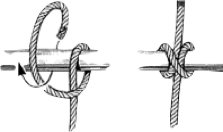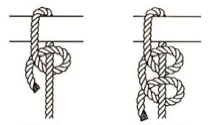Know Knots
1
1
5
Your Challenge
If you don't know these knots already try to learn them and be able to tie them quickly.
They are all useful for different purposes
Bowline
This makes a loop that will not slip and particularly useful to lower someone without the rope tightening around them. Form a loop, then in the standing part make a second and smaller loop. Imagine it's a rabbit that comes up out of the hole (through the loop) round the 'tree' and back down the hole.
Clove hitch
For fastening a rope to a pole. Either end of the rope will withstand a strain without slipping, either lengthways or downwards.
Fisherman's knot
Favoured by anglers. It is a method for joining two lines. It is a knot quickly made and easy to undo, the ends being pulled apart.
Reef knot
For tying two ropes togeher under strain, such as when you tie a parcel. It is a flat knot and will not slip.
Sheet bend
For joining two ropes of equal or unequal thickness together. Make a loop with one rope and pass the other rope's end through the round and bend it under its own standing part.
Half hitch
This is made by passing the rope end round a spar and behind itself. A round turn and two half hitches are used for tying a rope to a spar.
Sheep shank
This is used for shortening ropes. Make a half hitch round each of the bends in the rope, tighten the loops and the rope is shortened. Often used to shorten a tent's guy ropes..






